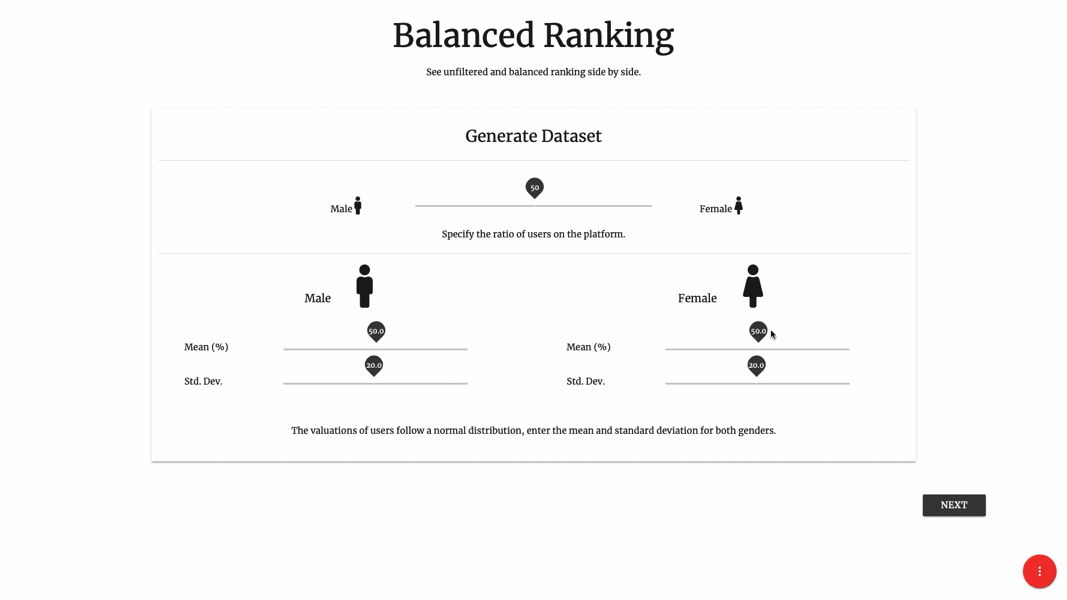Balanced Ranking
Ranking algorithms are used in a variety of places such as search engines, news feeds and recommendation systems. However, traditional ranking algorithms have been shown to reduce content diversity and polarise opinions.
Our Balanced ranking prototype demonstrates that it is possible to be fair while only losing a small amount of value. It accepts a set of fairness constraints and generates a balanced ranking for these constraints. The demo uses algorithms developed in Ranking with Fairness Constraints, published in ICALP 2018.
Before specifying the constraints the user can creates the data-set to be used. In particular, the user can set the share of males and females in the population and the distribution of their values. On submitting this, the tool creates a collection of candidates to be ranked and presents them to the user.

In the next section, each row in the table represents a position in the final ranking. Each row in the left column represent the minimum number of males to be selected before and including this position. The right column represents similar constraints for females. The constraints in the table can be edited individually, or simultaneously using the slider at the bottom.

Using these constraints the algorithm selects the top ten candidates from the data-set. The balanced ranking is then displayed on the right and the unfiltered list on the left. The values beside each position represent the count of males and females selected until this position in the ranking. A red value indicates that the number of candidates with the said gender is lower than the minimum required by the constraints. The balanced ranking always satisfies all constraints, ensuring each group is represented in the final ranking.

Take a look at Balanced ranking here.